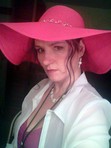A Story Structure
I cannot begin to express the value of information Ilearned this past fall when I participated in the Introduction to Screenwritingworkshop with producer/writer Elisa Dimitria Bowman of CINIGI LighthouseEntertainment. It was during thisworkshop that Ms. Bowman presented me with a diagram for the structure of ascreenplay. I've made a few adjustmentsto apply the same principles to the structure of a novel. I not only use this diagram when writing myown stories, but when I read novels written by others. It's genius in its simplicity, and so Ithought I'd share it this morning.
We are taught from an early point in our educationthat story has three essential parts – Introduction, climax and ending. However, while that is still a foundationaltruth, I'd like to fill in some of the other important parts in between thosethree.
Introduction –The beginning of your novel should set up a few things within the first few chapterslike: setting, introduction of the characters, laying of the foundation for theplot, and setting the story into forward motion.
Inciting Scene –This is one of those nuggets of dynamic information I learned from thescreenwriting class and has now been ingrained into my understanding. An inciting scene is the scene where thefirst important change happens in a story – it's the point of no return – the pointwhere certain decisions or actions by the characters lead down a certain roadand to certain consequence. In a screenplay, this usually happens within thefirst 20 minutes of the movie, or 20 pages of the screenplay. I've applied this concept toward a manuscriptin terms of the first 20% of the novel. If your novel is around 80,000 words, then your inciting scene should appeararound 16,000 words. Or if you go by achapter scale and your book is 20 chapters, this scene should happen aroundChapter 4.
Story Parts/Acts –If you take your novel and divide it into thirds, you'll have Part 1/Act 1,Part 2/Act 2, and Part 3/Act 3. Certainthings should occur in your story within each act, each containing their ownmini-stories within itself. On thelarger scale, the Introduction and Inciting Scene are parts of Act 1. The Climax and Turning Point are parts of Act2. The Twist, Resolution and/orConclusion are parts of Act 3. Again, if your novel is 80,000 words – Act 1should end around 26-27,000 words. Act 2should end around 52-54,000 words. Act 3should end at 80,000 words. In terms ofchapters for a 20 chapter novel – Act 1 around Chapter 6 or 7, Act 2 aroundChapter 13 or 14, and Act 3 at Chapter 20. Structuring your story to this model will help you greatly with pacing.
Climax – Turning Point –This should happen somewhere in the middle of your story. It could be placed anywhere after the quarter-pointof the 2nd Part/2nd Act to the three-quarter point of the2nd Part/2nd Act. This crucial point of the story is the central point of the entireplot. It contains the 'point' of the story. (I love this illustration, because a point isalso a tip.) For a novel of 80,000 words, the climax should be between 32,000and 47,000 words, or Chapter 8 to Chapter 12 for a 20 Chapter book.
Resolution, Twist and Conclusion –This would be where you tie the ends to all the story threads you have sown upto this point. It occurs in the last 1/3of your novel. This is where theconsequences of the previous actions are played out. You can insert a plot twist, which is somethingvaguely implied or planted in their earlier chapters that changes theresolution of the conclusion, before bringing the story to a close. These happen after 53-54,000 words in an80,000 word novel, or the last five chapters of a 20 Chapter novel. I try to place my twists and conclusionsusually within the last 20% (last 2-4 chapters or after 64,000 words),balancing out the inciting scene, and letting my resolution of plot points cometo a graceful and naturally paced end (unless it's a cliffhanger).
Please keep in mind that this is not an official storystructure, but I find that it works really well for me. Movies are simply moving stories, but theconcepts are quite the same as literary works. I see my books as written stories, but in my imagination I can see themas movies when I write them. If a storywouldn't be an interesting movie for me, then it I can't imagine it being an interestingbook. Hopefully, you too will beinspired by this diagram. See how yourstory compares to it – and perhaps you might just discover a better balance.Till next time,~T.L. Gray

Published on April 03, 2012 07:37
No comments have been added yet.



